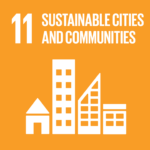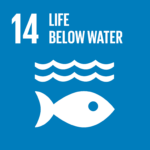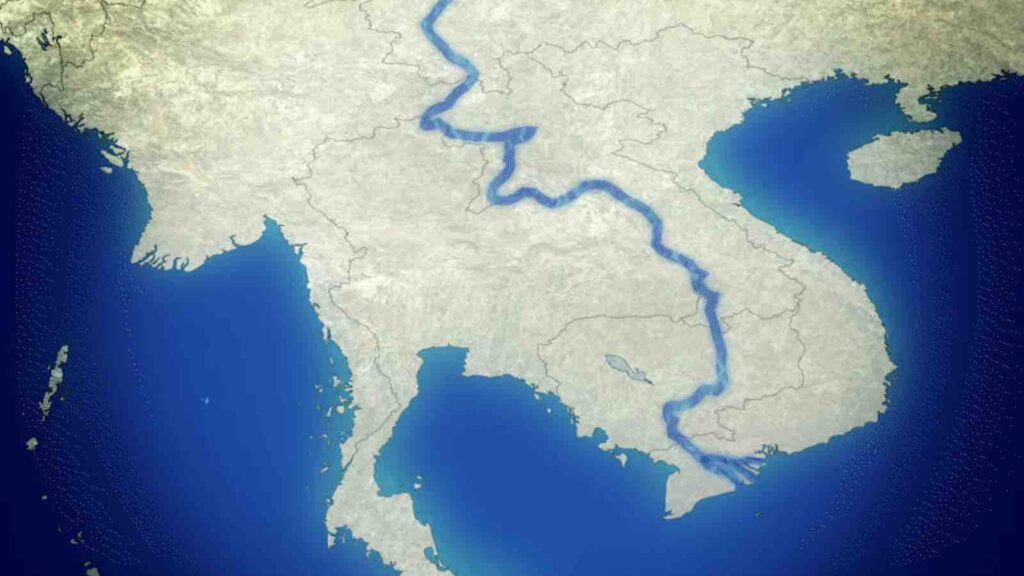The Mekong Delta, known as Vietnam’s agricultural heartland, is bracing for unprecedented saltwater intrusion this dry season. However, this year, the intrusion is expected to exceed normal levels, raising serious concerns for food security, water supply, and livelihoods.
The Mekong Delta, known as Vietnam’s agricultural heartland, is bracing for unprecedented saltwater intrusion this dry season. The region, which supplies more than half of Vietnam’s rice and a significant portion of its fruit and seafood, typically experiences saltwater intrusion from December to April. However, this year, the intrusion is expected to exceed normal levels, raising serious concerns for food security, water supply, and livelihoods.
RELEVANT SUSTAINABLE GOALS



According to the Southern Institute of Water Resources Research, saltwater levels in some areas have already surpassed the tolerance threshold for most crops. In Kiên Giang Province, seawater with a salinity level of four grammes per litre has penetrated 18-20 kilometres inland along the Cái Lớn River, making freshwater access increasingly difficult for farmers and residents.
Authorities across the Mekong Delta’s 12 provinces and Cần Thơ City are now racing against time to implement emergency measures, including dredging irrigation canals, constructing embankments, and upgrading clean water infrastructure, in an effort to mitigate the impact on agriculture and daily life.
A Multi-Million Dollar Response to a Growing Crisis
AgroKiên Giang Province, the largest rice-producing area in the Mekong Delta, has allocated VNĐ118 billion (US$4.6 million) to combat saltwater intrusion. Measures include:
- Repairing sluices and electric pump stations to maintain freshwater levels.
- Dredging irrigation canals to enhance water storage capacity.
- Constructing 51 earthen embankments across key districts.
- Building or upgrading 27 electric pump stations to improve water distribution.
These efforts aim to protect both farmlands and residential areas from further damage. Additionally, the province is distributing 6,755 plastic water storage tanks, each holding one cubic meter, to assist households facing severe freshwater shortages.
Farmers Fight Back: Adapting to a New Reality
With climate conditions worsening, farmers are being forced to rethink their agricultural practices. In Tiền Giang Province, where rice fields have historically suffered from saltwater damage, farmers have switched to growing vegetables, which require less water and are more resistant to drought.
For the 2024-25 winter-spring season, 12,650 hectares of vegetable crops have been planted—many of which will be harvested in time for the Tết (Lunar New Year) festival at the end of January. According to the Tiền Giang Department of Agriculture and Rural Development, this shift has yielded economic benefits, with:
- Production costs decreasing by 20-30% due to advanced farming techniques.
- Farmers’ profits increasing by 20% compared to traditional rice cultivation.
Similarly, in Bến Tre Province, the Farmers Association has launched training programs to help farmers mitigate the impact of saltwater intrusion. Farmers are encouraged to:
- Build temporary embankments around their fields to protect crops from saltwater damage.
- Store freshwater in ponds and ditches for use during critical dry months.
- Adopt salt-tolerant farming methods to maintain productivity despite changing environmental conditions.
Similar“I build a temporary embankment around my 0.8-hectare orchard every year,” said Nguyễn Văn Huy, a farmer in Giồng Trôm District’s Thuận Điền Commune. “It has significantly reduced damage, and after attending the training course this year, I’ve learned new techniques to restore my orchard after saltwater exposure.”
Weather Warnings and Public Awareness Efforts
With saltwater intrusion occurring earlier than usual this year, authorities are intensifying public awareness campaigns to ensure communities are prepared.
In An Giang Province, local authorities have:
- Issued early warnings to residents about droughts and water shortages.
- Encouraged people to store and use freshwater efficiently.
- Advised farmers to adjust planting schedules to minimize losses.
“The province has instructed localities to focus on raising awareness and guiding people on proactive measures to secure freshwater,” said Ngô Công Thức, Vice Chairman of the An Giang People’s Committee.
Saltwater intrusion is not just a seasonal issue—it is a long-term challenge driven by climate change, rising sea levels, and upstream dam construction along the Mekong River. If the trend continues, the future of Vietnam’s most fertile agricultural region is at risk.
To combat these growing threats, experts urge the government to:
- Invest in large-scale irrigation infrastructure to better manage water resources.
- Expand research into salt-tolerant crop varieties to ensure long-term food security.
- Strengthen regional cooperation with neighboring countries to improve water flow management in the Mekong River.
With the dry season expected to intensify in the coming months, the race to protect Vietnam’s rice bowl has never been more urgent. Whether these adaptation strategies will be enough to safeguard livelihoods remains to be seen—but one thing is certain: climate resilience is no longer an option, but a necessity for the Mekong Delta and its people.
You may also be interested in :
234 New Species Discovered In Mekong Highlight Urgent Conservation Need




